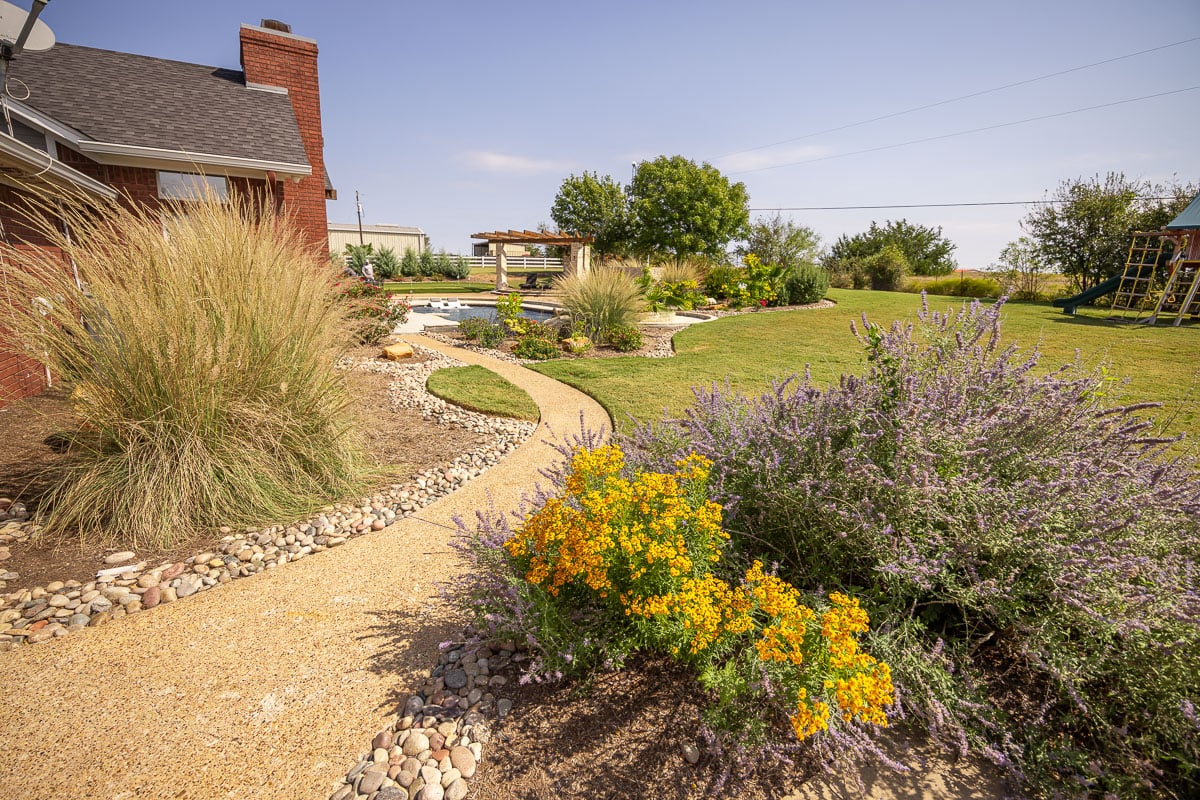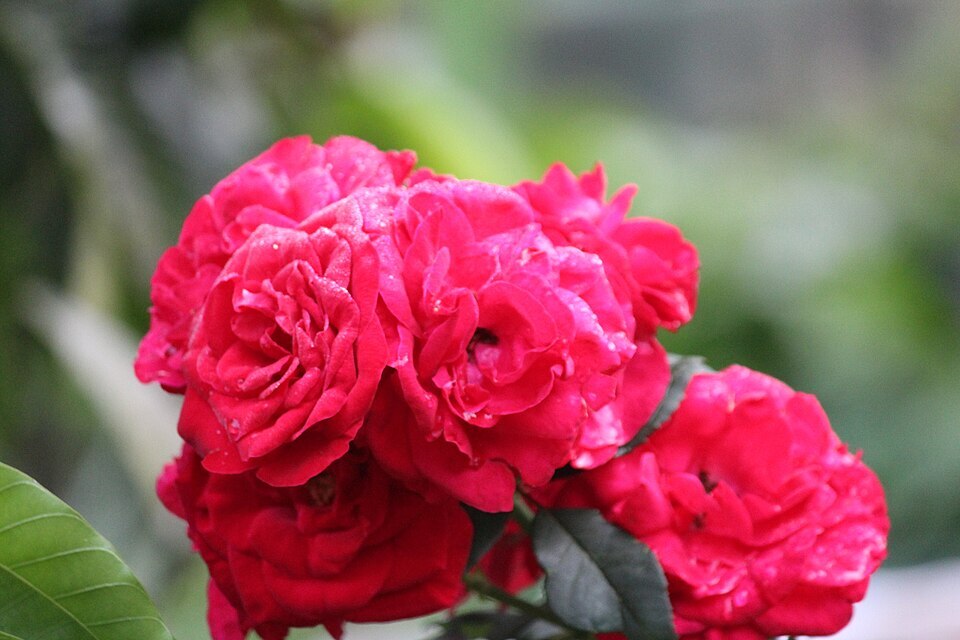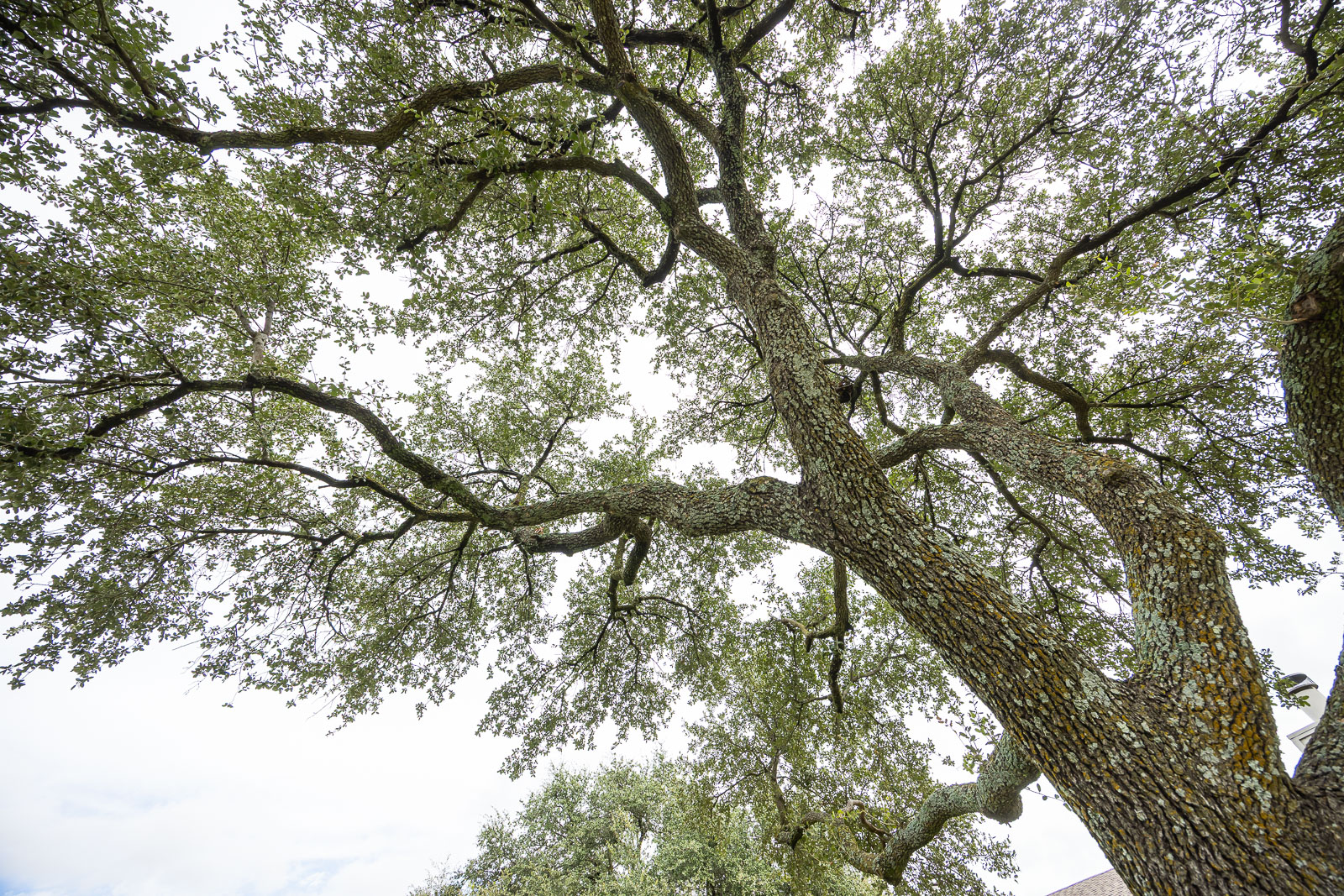
Written By Barry Marusak
You want your outdoor space to be a reflection of your care and attention– a neat, attractive lawn and flower beds that are the envy of the neighborhood. But let’s face it: keeping everything looking perfect can be a little tricky, especially when it comes to grass clippings. No matter how careful you are, it seems like those little clippings always find their way into your flower beds, turning your tidy landscape into a mess.
So why are there grass clippings in your flower beds? Well, a combination of wind, improper mowing techniques, and mowing without a mulching mower can send clippings flying where you don’t want them. But don’t worry! There are some simple steps you can take to keep your garden beds clean and pristine.
Let’s dive into how you can keep grass clippings out of your flower beds and achieve the lawn of your dreams.
Why Did Grass Clippings End Up in My Landscape Beds in the First Place?
You take great care of your flower beds–planting, watering, and mulching to create a beautiful, well-kept landscape. So it’s frustrating to see grass clippings scattered over your carefully maintained beds after mowing. How did they get there?
There are a few possible culprits:
- Wind: On breezy days, freshly cut grass can easily drift into your flower beds, especially if the lawn is dry and the clippings are light.
- Improper Mowing Techniques: If your mower has a side discharge, it could be blowing grass straight into your beds. Mowing too fast or in the wrong direction can also send clippings flying.
- Uneven Lawn Edges: If your lawn meets your flower beds without a defined edge, clippings can spill over more easily.
So, how do you stop this from happening? The best way to prevent grass from invading your flower beds is to use a mulching mower. These mowers chop up grass into tiny pieces and drop them straight down into the lawn, rather than discharging them to the side. Not only does this keep your beds clean, but it also returns nutrients to your grass, making it a win-win for your landscape.

Do Grass Clippings Cause Weeds?
If you’ve ever spotted grass clippings in your flower beds, you might be wondering–are they bringing weeds along for the ride? The good news? If your beds are properly mulched, you’ve got nothing to worry about.
Mulch acts as a protective barrier, blocking sunlight from reaching weed seeds and preventing them from sprouting. Plus, high-quality mulch is typically sterile, meaning it won’t introduce new weeds into your beds. So even if a few stray clippings land on op, they won’t suddenly turn your flower beds into a weedy mess.
However, grass clippings can contribute to weed growth in certain situations, especially if:
- Your beds aren’t well mulched. Without that protective layer, weed seeds hiding in the soil or riding along on clippings have a chance to sprout.
- Your lawn has weeds. If you mow over dandelions, crabgrass, or other weeds before they’ve been controlled, their seeds can get caught in the clippings and end up in your garden beds.
- Clumps of clippings pile up. Thick layers of grass can create a damp, matted environment where weeds (and even fungus) thrive.
To keep your flower beds weed-free and looking their best, maintaining a healthy mulch layer and proper mowing habits is key.

Are Grass Clippings in Flower Beds Harmful or Beneficial?
When it comes to grass clippings in your flower beds, it’s a bit of a double-edged sword–they can be both harmful and beneficial depending on the situation.
On the beneficial side, grass clippings can act as a natural mulch. If they’re properly mulched and evenly spread, they can help retain moisture in the soil, regulate temperature, and add nutrients back to the lawn. This is especially true if your lawn is mowed regularly and the clippings are finely chopped.
However, things can go south if the clippings are left in thick piles or end up in your flower beds without proper mulching. As we mentioned above, grass clippings can foster weed or fungal growth.
When considering if grass clippings are harmful or beneficial, it is important to understand grass types. Bermuda grass doesn’t produce a true seed, but it does produce seed heads, which can become problematic if left unchecked. The seeds from Bermuda grass can spread and take root, leading to patches of grass where you don’t want them. To control this, you may need to spray Bermuda grass to get rid of it if it has spread into your landscape beds.
On the other hand, St. Augustine grass also doesn’t produce true seeds, but it is less problematic when it comes to spreading via clippings. If you’re using a mulching mower, you’re unlikely to see any new grass sprouting from clippings.

How to Keep Grass Out of Garden Beds
Keeping grass clippings out of your garden beds isn’t as hard as it sounds–with a few simple adjustments to your mowing habits and landscape maintenance routine, you can make sure your flower beds stay clean and tidy.
- Use Proper Mowing Techniques - The first step in preventing grass clippings from invading your flower beds is ensuring your mower is set up to mulch properly. A mulching mower chops clippings finely and disperses them directly onto the lawn, which reduces the chance of them blowing into your beds. Avoid using mowers with a side discharge or setting them too high. Mowing parallel to the flower bed edge can help prevent clippings from spilling over into your garden.
- Define Your Garden Beds with Edging - Create a clean, defined edge between your lawn and garden beds. You can use physical barriers like stone or brick to create a clear boundary between your lawn and flower beds. This helps prevent clippings from spilling over into the garden and makes your landscape look neat. Even a natural edge can act as a great buffer against grass clippings.
- Mulch Your Landscape Beds Regularly - Mulching your garden beds isn’t just great for preventing weeds–it can also stop grass clippings from making their way into your flower beds. A layer of mulch (preferably 2-3 inches deep) acts as a barrier, blocking grass clippings from settling in and ensuring that your flower beds stay clean. Plus, mulch helps with moisture retention and adds nutrients to the soil. In addition to using mulch, be sure to check that it remains fresh throughout the season. A thick or decaying layer can leave your flower beds vulnerable to grass clippings, so topping off your mulch as needed will help keep things looking great.

Partnering with a Professional in Central Texas to Maintain a Tidy Landscape
We get it–keeping grass clippings out of your flower beds can be a real challenge. Between the wind, uneven mowing, and the occasional clump of grass, it can feel like a never-ending battle to keep your garden looking pristine. But don’t stress, you don’t have to tackle this on your own.
If you’re tired of constantly battling grass clippings, a professional can help keep your flower beds neat. With the right expertise and equipment, we can take the hassle out of lawn and garden maintenance, so you can enjoy your beautiful landscape.
At Green Ackors, we pride ourselves on providing top-notch care with a personal touch, ensuring your outdoor space always looks its best.

Searching for a partner to handle the details of your landscape? Get started by filling out our contact form!
%20-%20copy.png)



